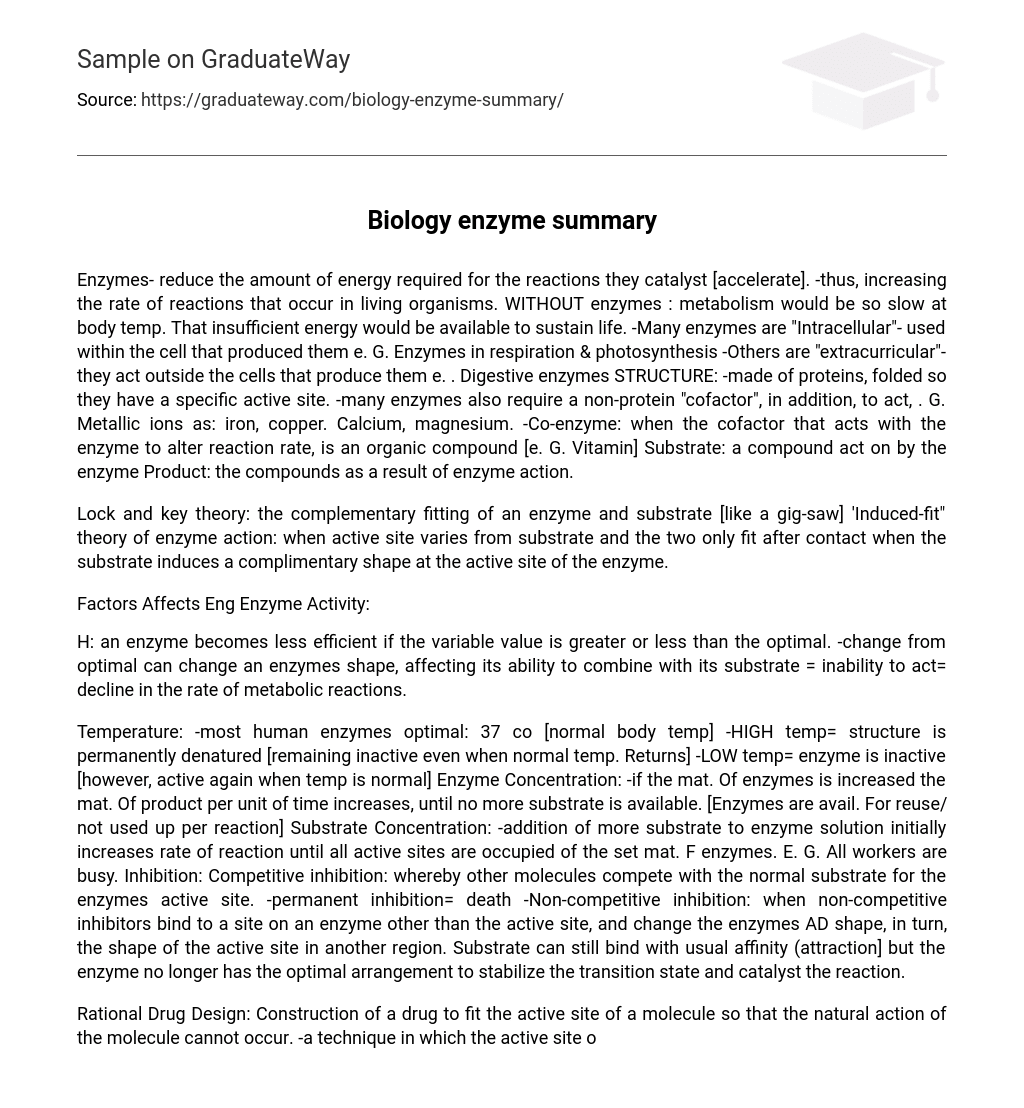Enzymes- reduce the amount of energy required for the reactions they catalyst [accelerate]. -thus, increasing the rate of reactions that occur in living organisms. WITHOUT enzymes : metabolism would be so slow at body temp. That insufficient energy would be available to sustain life. -Many enzymes are “Intracellular”- used within the cell that produced them e. G. Enzymes in respiration & photosynthesis -Others are “extracurricular”-they act outside the cells that produce them e. . Digestive enzymes STRUCTURE: -made of proteins, folded so they have a specific active site. -many enzymes also require a non-protein “cofactor”, in addition, to act, . G. Metallic ions as: iron, copper. Calcium, magnesium. -Co-enzyme: when the cofactor that acts with the enzyme to alter reaction rate, is an organic compound [e. G. Vitamin] Substrate: a compound act on by the enzyme Product: the compounds as a result of enzyme action.
Lock and key theory: the complementary fitting of an enzyme and substrate [like a gig-saw] ‘Induced-fit” theory of enzyme action: when active site varies from substrate and the two only fit after contact when the substrate induces a complimentary shape at the active site of the enzyme.
Factors Affects Eng Enzyme Activity:
H: an enzyme becomes less efficient if the variable value is greater or less than the optimal. -change from optimal can change an enzymes shape, affecting its ability to combine with its substrate = inability to act= decline in the rate of metabolic reactions.
Temperature: -most human enzymes optimal: 37 co [normal body temp] -HIGH temp= structure is permanently denatured [remaining inactive even when normal temp. Returns] -LOW temp= enzyme is inactive [however, active again when temp is normal] Enzyme Concentration: -if the mat. Of enzymes is increased the mat. Of product per unit of time increases, until no more substrate is available. [Enzymes are avail. For reuse/ not used up per reaction] Substrate Concentration: -addition of more substrate to enzyme solution initially increases rate of reaction until all active sites are occupied of the set mat. F enzymes. E. G. All workers are busy. Inhibition: Competitive inhibition: whereby other molecules compete with the normal substrate for the enzymes active site. -permanent inhibition= death -Non-competitive inhibition: when non-competitive inhibitors bind to a site on an enzyme other than the active site, and change the enzymes AD shape, in turn, the shape of the active site in another region. Substrate can still bind with usual affinity (attraction] but the enzyme no longer has the optimal arrangement to stabilize the transition state and catalyst the reaction.
Rational Drug Design: Construction of a drug to fit the active site of a molecule so that the natural action of the molecule cannot occur. -a technique in which the active site of the molecule is determined and a second molecule [the drug] is constructed to fit into that active site to inhibit the activity of the first molecule. Denature: the modification of the molecular structure of a protein from its natural state.





